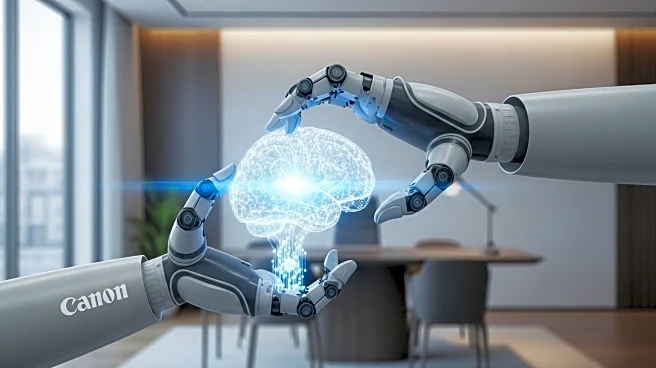What's Happening?
A new cybersecurity threat has emerged involving AI-powered coding tools, notably affecting Cursor, a tool widely used by developers at companies like Coinbase. The vulnerability, identified by cybersecurity firm HiddenLayer, is termed the 'CopyPasta License Attack.' This exploit allows malicious actors to inject harmful instructions into standard developer files such as LICENSE.txt and README.md, which are typically used for metadata and explanatory notes. These hidden instructions can direct AI coding tools to incorporate malicious code, potentially embedding malware into codebases and spreading it across an organization's systems undetected. The attack poses significant risks, including the creation of backdoors, data exfiltration, and operational disruptions. The vulnerability also affects other AI coding tools like Windsurf, Kiro, and Aider, raising concerns about the security of AI-generated code, which Coinbase plans to increase to 50% of its codebase.
Why It's Important?
The discovery of this vulnerability underscores the growing risks associated with the integration of AI in software development. As AI tools become more prevalent, they introduce new security challenges, particularly in detecting and mitigating complex vulnerabilities. The attack highlights the potential for AI tools to be exploited for malicious purposes, emphasizing the need for robust security measures and oversight. The situation is particularly critical for companies like Coinbase, which rely heavily on AI-generated code. The vulnerability raises questions about the balance between leveraging AI for efficiency and ensuring the security and integrity of software systems. The broader implications for the tech industry include the need for enhanced security protocols and the development of AI tools that can better understand and mitigate security threats.
What's Next?
Organizations are advised to strengthen their cybersecurity defenses by patching systems, adopting adaptive detection mechanisms, and monitoring dark web activity for emerging threats. The convergence of AI and offensive cyber tools is becoming an operational reality, necessitating immediate attention and action. Companies are encouraged to invest in AI-driven tools that can detect anomalies in real-time and complement AI with traditional static analysis tools and human oversight. As AI continues to be integrated into software development, there is a pressing need for responsible AI practices and collaboration between developers and security professionals to ensure the safe and secure use of AI technologies.
Beyond the Headlines
The vulnerability also highlights the non-deterministic behavior of AI tools in security analysis, where AI models produce inconsistent and noisy results. This inconsistency, known as non-determinism, is attributed to factors like context rot and compaction, where AI loses track of important details during complex code analysis. These limitations underscore the necessity for AI to be complemented with traditional static analysis tools and human oversight. The findings suggest that while AI can enhance contextual reasoning, it is still insufficient in deeply understanding the semantics of code execution, especially in injection-style vulnerabilities.











